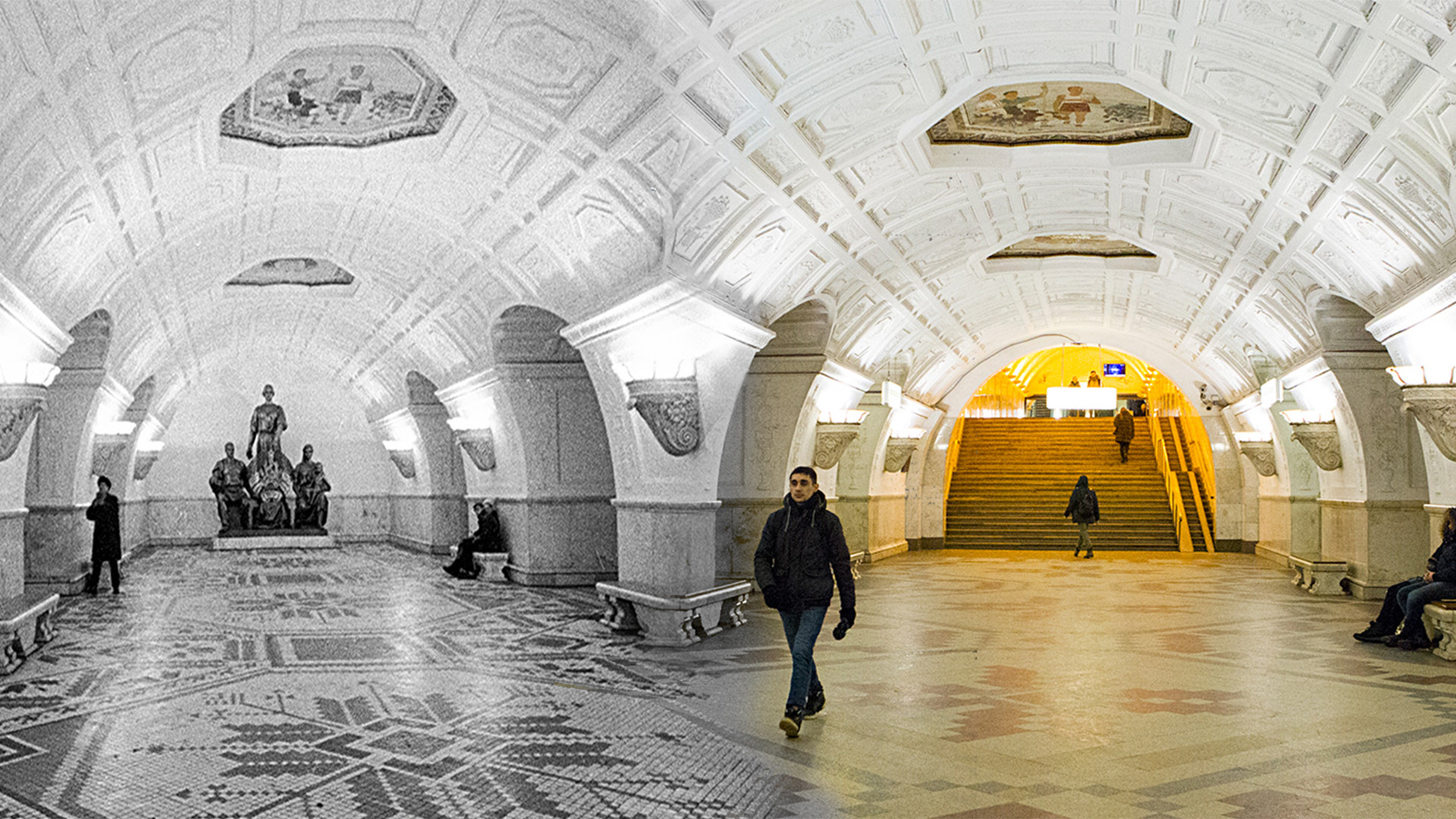
In one of the world’s most rapidly growing cities, one thing changes especially fast: the Moscow Metro is expanding nonstop. Shifting political ideologies, a growing population, and construction of strategically important buildings have all altered the appearance of one of the most iconic and ever-present symbols of Russia’s capital: the Moscow Metro.
Biblioteka
Officially opened in May 1935, this station was one of the very first. On opening day, the station’s floor was made of parquetry, and there was no need for a passage to other stations because they didn’t yet exist. However, a passage to two neighboring stations was built in 1965, and as one of the metro’s longest passages, it joined Biblioteka
Okhotniy Ryad
When it opened Okhotniy Ryad was the world’s deepest metro station. Just like Biblioteka
Kropotkinskaya
Planned as an underground vestibule for the never-built Palace of Soviets, the Kropotkinskaya station now leads to the Cathedral of Christ the Savior. The station arguably has one of the most architecturally sophisticated vestibules, built in the form of an arch supported with symmetrical columns. A noticeable change happened to the station after the Moscow Metro officially accepted and registered its trademark in the form of a large red letter M, designed by Art. Lebedev Studio. The huge METRO sign was removed and substituted with the uniform M, the Moscow Metro’s widely recognized symbol.
Chistye Prudy
This station’s architect was Nikolai Kolli who worked with the famous French modernist master, Le Corbusier. Opened in 1935, the vestibule is unique because most stations with vestibules in cubic form have been reconstructed and lost their original look. During World War II, the surface entrance was boarded up because the station served as headquarters of the military’s Joint Staff. This station has preserved the old METRO sign on top of the vestibule, a rare site for contemporary Moscow.
Sokolniki
The Sokolniki stations launched the first underground train when passengers departed here in May 1935. Located on the alley leading to Sokolniki Park, the vestibule is designed as an arch with two separate exits, and the arch’s edge has an engraved quotation attributed to Stalin: “There are no fortresses that the Bolsheviks can’t storm.” The words were crowned with Stalin’s portrait on the arch’s top, but this highly controversial leader’s portrait is no longer there. A mysterious lamp in the form of a star (or, as some say, an upright five-pointed symbol of satanic symbolism) has also been removed.
Kiyevskaya
This station on the Filyovskaya Line - (do not confuse it with the Kiyevskaya station on the Blue Line) - was subjected to serious renovations just 10 years after it opened. The Armenian onyx used for the covering of the columns began to break off, and it was decided instead to use a light-blue and light-yellow marble. The old floors, currently made of gray and pink granite, were also replaced.
Kurskaya (Arbatsko-Pokrovskaya)
Named after nearby Kursky Rail Terminal, the Kurskaya metro station is decorated with gray marble, and the floor pattern changed form when its rhombus-like marble plates were substituted with square-shaped bars.
Ploschad Revolutsii
World War II seriously affected this iconic station on the Blue Line. Not only the famous bronze statues were evacuated to Central Asia, but interior elements of the newly opened passage leading to Teatralnaya station (opened in 1946) were inspired by the Victory. Bas-reliefs on the passage’s walls depict flags and weapons, and the entrance is marked with a slightly modified wartime slogan, “Ours is a righteous cause. The enemy shall be defeated. Victory will be ours.” Stalin’s name, however, has been removed from the wall.
Arbatskaya
One of the most ambitious changes in Moscow history came when an entire central district was demolished to clear space for a new building to host the Soviet General Staff. The Arbatskaya station vestibule had to be changed as
Belorusskaya (Circle line)
Architects designed this station, which received the Stalin Prize in
Belorusskaya (Green line)
If you look at old photos you’ll see a number of urns standing close to each pylon in the station. They’re not there anymore. The station’s floor has also changed,
Mayakovskaya
The architecture of Mayakovskaya station is unique, and
Avtozavodskaya
This station’s design praises the heroic labor of the Soviet people during World War II. The southern lobby initially formed a separate structure, but was subsequently built into a residential building on Avtozavodskaya Street.
Paveletskaya
If you enter this station from the Paveletsky Rail Terminal you might notice a dark circle on the wall above the escalator. This is where one of many bas-reliefs depicting Stalin once
You may enjoy the beauty of Russian Metro even if you are abroad: check out this 10 metro stations which were inspired by Russia.
If using any of Russia Beyond's content, partly or in full, always provide an active hyperlink to the original material.
Subscribe
to our newsletter!
Get the week's best stories straight to your inbox